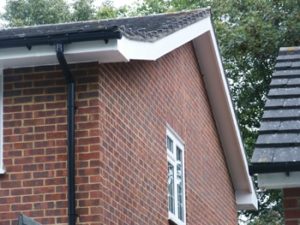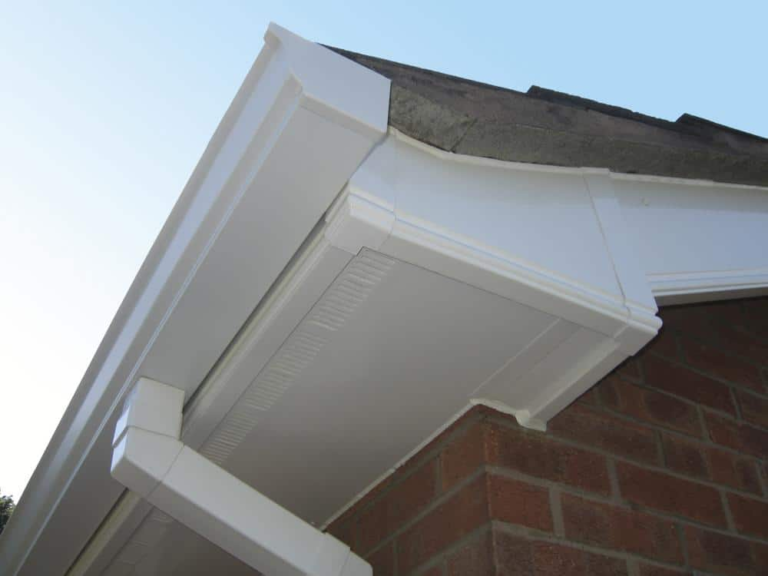fascia-repair6517
fascia-repair6517
The 10 Most Scariest Things About Fascia And Soffit Specialists

Understanding Soffit and Cladding: Importance, Types, and Installation
Soffit and cladding are 2 necessary components of a structure’s outside that often go undetected however play a vital function in both looks and performance. While soffit refers to the product that covers the underside of eaves or overhangs, cladding describes the product applied to the exterior of a structure to supply it with a protective layer and a visually appealing finish. This detailed short article will explore the types, importance, advantages, installation, and frequently asked concerns regarding soffit and cladding.
Significance of Soffit and Cladding
Both soffits and cladding serve significant functions for building and architectural style:

Soffit
- Ventilation: Adequate soffit ventilation enables airflow in the roof area, which helps manage temperature level and humidity, minimizing the threat of mold and rot.
- Defense: Soffits protect the rafters and eaves from water damage and bug problem.
- Visual Enhancement: Well-designed soffits enhance the general appearance of a building, supplying a completed appearance to roof overhangs.
Cladding
- Insulation: Cladding assists to insulate the structure, enhancing energy performance by maintaining interior temperatures.
- Weather Resistance: It safeguards the structure from aspects such as rain, wind, and snow.
- Visual Appeal: With a variety of materials available, cladding allows designers to produce aesthetically spectacular outsides.
- Maintenance: High-quality cladding minimizes the requirement for frequent maintenance and repairs.
Kinds of Soffit and Cladding
Soffit Types
Soffits can can be found in numerous products, consisting of:
- Vinyl: Known for its low maintenance and weather-resistant properties.
- Aluminum: Durable and resistant to deterioration but might damage easier.
- Wood: Offers visual appeal however requires routine maintenance and treatment for weather resistance.
- Fiber Cement: Combines durability with the look of wood, resistant to rot and pests.
Cladding Types
The selection of cladding materials can substantially affect both aesthetics and functionality. Common types consist of:
- Vinyl Cladding: Cost-effective, lightweight, and offered in different designs and colors.
- Wood Cladding: Naturally gorgeous, however needs regular treatment and maintenance.
- Brick: Extremely durable and fireproof however more expensive and requires professional installation.
- Stone and Stone Veneer: Offers a traditional appearance Fascia And Soffit Specialists unequaled resilience, perfect for high end homes.
- Fiber Cement: Mimics wood or masonry with a portion of the maintenance, resistant to weather and insects.
- Metal Cladding: Often utilized in contemporary designs, provides an industrial appeal and significantly resists weathering.
Contrast of Soffit and Cladding Materials
The following table describes the key features and qualities of different soffit and cladding products:
| Material | Maintenance | Toughness | Aesthetic Appeal | Cost | Insulation Property |
|---|---|---|---|---|---|
| Vinyl Soffit | Low | Medium | Great | Low | Low |
| Aluminum Soffit | Medium | High | Fair | Medium | Low |
| Wood Soffit | High | Low to Medium | Excellent | Medium | Low |
| Fiber Cement | Low | High | Exceptional | Medium | Medium |
| Vinyl Cladding | Low | Medium | Excellent | Low | Medium |
| Wood Cladding | High | Medium | Exceptional | Medium | Medium |
| Brick Cladding | Low | High | Outstanding | High | High |
| Stone Veneer | Medium | High | Exceptional | High | High |
| Metal Cladding | Low | High | Fair to Excellent | Medium to High | Low |
Installation of Soffit and Cladding
The installation procedure of soffit and cladding varies depending upon material choice and regional building codes. Nevertheless, understanding the basic actions involved can be useful:
Steps for Installing Soffit
- Preparation: Gather all tools and products needed, including panels, nails, and security equipment.
- Measurement: Measure the area accurately to cut soffit panels to the correct size.
- Ventilation: Ensure proper air flow by incorporating vents where needed.
- Installation: Attach the panels beginning with one side, guaranteeing they fit correctly into the established framework.
- Completing Touches: Seal any spaces for insulation and aesthetic appeals.
Actions for Installing Cladding
- Structure Setup: Create a robust structure using vertical battens if needed.
- Insulation: If insulating, install insulation boards before cladding.
- Cutting Panels: Measure and cut cladding panels based on design requirements.
- Accessory: Secure panels using appropriate fasteners, guaranteeing alignment and level.
- Sealing: Seal joints and edges for weather resistance.
Regularly Asked Questions (FAQs)
1. What is the typical life expectancy of cladding products?
The life-span differs commonly among products:
- Vinyl: 20-40 years
- Wood: 10-30 years (with maintenance)
- Brick and Stone: 50+ years
- Fiber Cement: 25-40 years
2. Is soffit installation essential?
Yes, soffit installation is necessary for appropriate ventilation and securing the roof structure from weather damage, insects, and rot.
3. Can soffit be installed without cladding?
Yes, soffit can be set up individually. Nevertheless, it is generally set up in conjunction with cladding for improved looks and defense.
4. What factors should be thought about when picking cladding?
Important factors include:
- Desired visual
- Environment considerations
- Spending plan restraints
- Maintenance requirements
- Energy performance
5. Can I set up soffit and cladding myself?
While DIY installation is possible for those with appropriate abilities, hiring experts ensures quality workmanship and compliance with building codes.
Soffit and cladding are crucial components of a building’s outside that substantially impact visual appeals, functionality, and energy effectiveness. Comprehending their types, benefits, and installation processes can assist property owners and contractors in making notified choices. Whether using vinyl, wood, or fiber cement, selecting the ideal materials and making sure appropriate installation will improve the durability and beauty of any structure while preserving its protective qualities.




